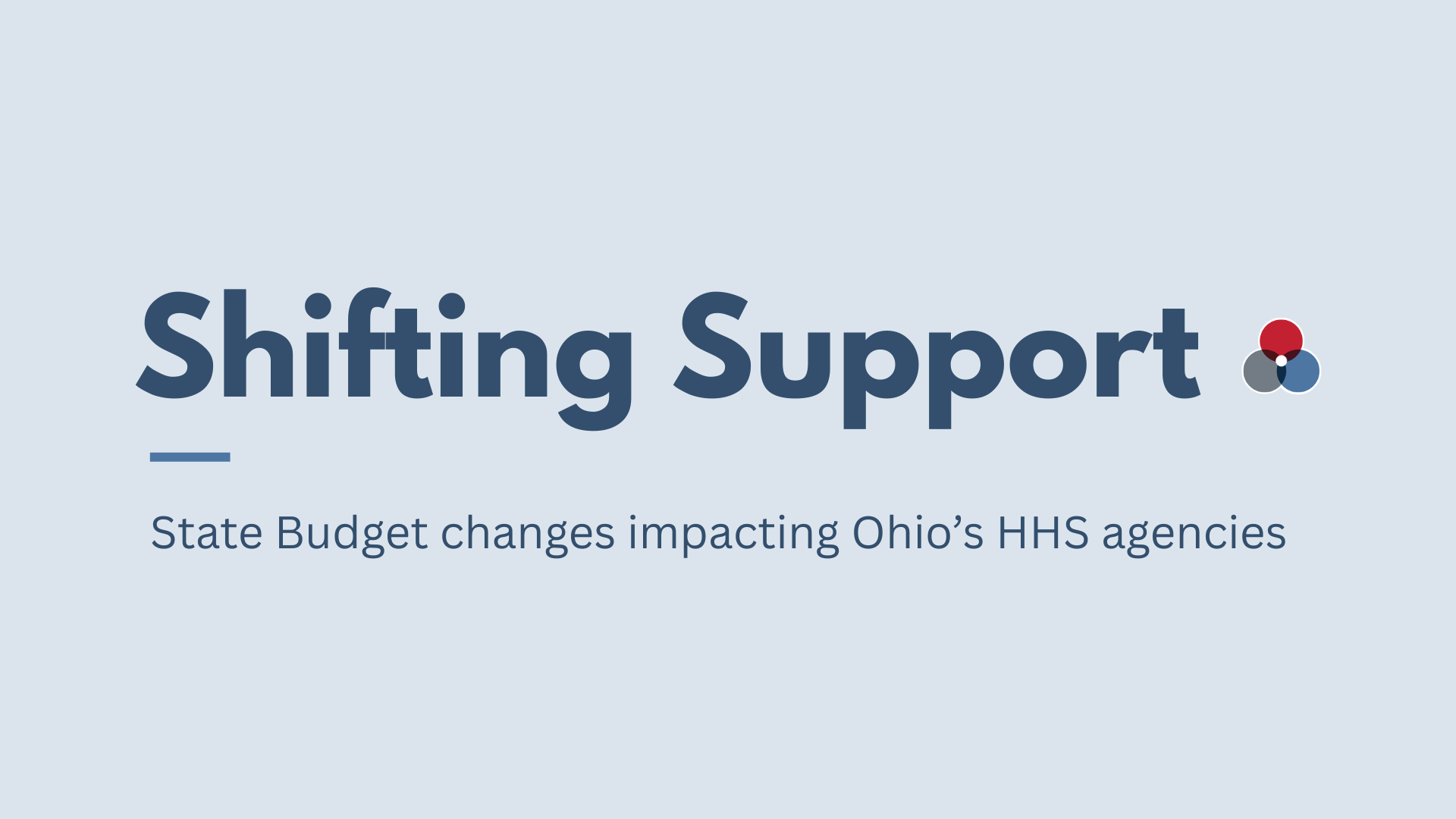By: Brie Lusheck, for The Center for Community Solutions
What are Adverse Childhood Experiences (ACEs)?
In the mid-1990s the Centers for Disease Control and Prevention (CDC) and Kaiser Permanente joined to conduct a study that focused on the history of exposure to trauma in 17,000 adults. Data from physical examinations was combined with a percent question survey that focused instances of abuse or neglect that occurred when each participant was a child. The study concluded that there is a correlation between high numbers of what the researchers titled Adverse Childhood Experiences (ACEs), and an increased risk of patients having 7 out of the 10 leading causes of death.
The study showed that high doses of trauma affect: [1]
- Brain development
- Immune system
- Hormonal system
- How DNA is read and/or transcribed
- Tripled the risk of heart disease and lung cancer
- Reduced life expectancy by 20 years
Even more recent studies have shown trauma experienced in childhood contributed to higher odds of:
- Having a psychiatric disorder in adulthood[2]
- Individuals with six or more ACEs have a more than 24 times greater risk of attempting suicide[3]
- Increased rate of adolescent pregnancy [4]
- Additional negative physical outcomes, such as diabetes and heart attack [5]
- Liver disease[6]
- Sexually transmitted disease
- Smoking
Definitions
The CDC and Kaiser, in what is commonly known as “The ACEs Study,” created a widely used screening/assessment tool that focuses on percent specific questions. This 10-part questionnaire lets practitioners determine the amount of trauma an individual has experienced throughout his or her childhood, and allows treatment to focus on specific instances of trauma that occurred for that individual. All 10 questions focus around three overarching types of Adverse Childhood Experiences: abuse, neglect and household dysfunction. Other models have been adapted to fit the needs of specific populations, since the creation of the original ACEs survey include but are not limited to:
- Philadelphia Expanded ACE Survey
- Adaptations have been made in the survey to better identify and treat individuals with Post Traumatic Stress Disorder (PTSD) such as the PTSD Checklist
- Life Event Checklist
- Childhood Trust Events Survey
- ACE-Q
According to the Substance Abuse and Mental Health Services Administration (SAMHSA), Adverse Childhood Experiences include:[7]
- Physical abuse
- Sexual abuse
- Emotional abuse
- Physical neglect
- Emotional neglect
- Mother treated violently
- Substance misuse within household
- Household mental illness
- Parental separation or divorce
- Incarcerated household member
Trauma can involve one specific event or a series of events that can be both physically and emotionally harmful, and have lasting effects on that individual’s healthy development. Events and circumstances, that happen once or multiple times, may include the actual or extreme threat of physical or psychological harm or the withholding of material or relational resources essential to healthy development. It is common for an individual to experience at least one type of trauma in his or her lifetime.[8]
Trauma can involve one specific event or a series of events that can be both physically and emotionally harmful, and have lasting effects on that individual’s healthy development.
The stress response system allows our body to respond to stressful events. Many individuals experience stress naturally and with no long-term effects. When an individual experiences extreme and repetitive stress, those instances become toxic stress. Stress that is unpredictable, severe and prolonged leaves the brain vulnerable to toxic stress, which in turn creates a myriad of heightened responses throughout our body. In these cases, everything from our hormones to our DNA can be impacted by severe and persistent instances. Toxic stress can significantly impact the way our brain responds to stress in the future and the fundamental design of the brain’s internal chemistry.
Brain Development
By the age of 5, 90 percent of our brain’s development has occurred.[9] Even in the first few months of life, a child’s brain is rapidly developing, forming and responding to experiences. Neural connections in the brain respond to the new world around them. In these early stages of development, neural connections are laying the groundwork for how to self-sooth and how to form relationships with others. Creating long-lasting relationships impacts both social and cognitive development.
Creating long-lasting relationships impacts both social and cognitive development.
Stressful experiences, even if they are brief, can create long-lasting alterations to stress systems that last into adulthood.[10] Through connections, billions of brain cells organize into networks that are created as a result of human experiences. Connections are formed due to human interactions, and learned behaviors are strengthened through continuous habits. For example, if a child develops the habit of crying and there is consistently no response from the people around them, the child will stop crying and seeking out attention as he/she knows will go unnoticed. This example explains not only why frequent and quality human relationships are so impactful on our early experiences, but also hold the key to the role relationships play in building resiliency so individuals can overcome instances of trauma and obtain lasting healing.
An overactive adrenaline system can make changes to receptors that create abnormalities. The body’s fundamental stress response in the brain can change so dramatically that neural networks that at one time may have equipped an individual with the tools to cope with stress, can now create aggression and inattention issues.
Pregnancy
Studies have shown that there is a correlation between a mother’s Adverse Childhood Experiences and her unborn child’s development. One study found that mothers with high ACEs delivered babies with smaller birth weights, and each additional ACE decreased her child’s birth weight by 16.33 grams and a decreased gestational age of 0.063 weeks, or roughly 0.44 days, for each ACEs unit increase.[11] Negative developmental outcomes in early childhood have been repetitively tied to parents with high ACE scores.[12]
Neural development in the womb has been shown to be impacted by any trauma or stress that the mother is exposed to during pregnancy.
Neural development in the womb has been shown to be impacted by any trauma or stress that the mother is exposed to during pregnancy. Studies show connections between a child’s behavioral development impairments with mothers who experienced trauma while pregnant.[13] Other studies have linked increased amounts of both fetal heart rate and fetal movement to mothers experiencing depression.[14] These same studies have shown increased vulnerability to the child developing depression as well.
Children
As described in detail above, brain development occurs primarily before the age of 5. Any trauma a child experiences in this time frame can significantly impact their brain’s very make up for years to come. Studies show the impact of trauma not only on brain development but on how a child forms attachments, self-regulates, cognition and a self-concept. [15]
Research has shown the impacts of childhood trauma on a child’s overall health. Conditions like failure to thrive, persistent asthma, headaches and stomachaches are prevalent in children who have experienced trauma or toxic stress.
A study that included 158 Head Start participants found 78 percent of the children and 66 percent of parents reported exposure to at least one incident of community violence.[16] Children who experience trauma often show symptoms by physically acting out with violence and other hard to control behavior issues. This is further proven in a study that showed that communities with high ACE scores have higher rates of school suspensions.[17]
Adults
The original ACEs study examined how childhood experiences affect an individual’s health later on in life. Since the study’s findings, more work has been done to examine intervention and preventative methods in children to prevent the long-term effects of Adverse Childhood Experiences in adulthood. The initial ACEs study makes a clear case for the impact they have on adult outcomes.
Older Adults
As we examine the impact of trauma and toxic stress on the developing brain, it is important to examine these long-term impacts on older adults.
Adversity specific to the experiences of older populations can occur through events like: retirement, the loss of a spouse or other loved ones, the loss of a lifestyle, increased health challenges and elder abuse. These can contribute to lasting effects on an individual’s health and mental health issues.
The Great Depression, World War I and World War II had significant impacts on not only those who fought in the wars, but also on the people and children at home.
Not only are older adults coping with current trauma and toxic stress in their lives due to life changes, but significant global traumas also impacted the development of a whole generation of children and young adults who are now older adults. The Great Depression, World War I and World War II had significant impacts on not only those who fought in the wars, but also on the people and children at home. During The Great Depression, a significant proportion of the population experienced hunger. During both great wars, children lost parents, or spent significant amounts of their childhoods with one parent. In addition, children were taught almost immediately of the dangers of bombs and foreign invasions here in the United States. And, in Europe and Japan whole towns and cities were demolished, in addition to the impact of the Holocaust. These images and experiences left untold impacts on the brain development of a generation who are now becoming older adults.
Response
Understanding various components that contribute to ACEs, toxic stress and trauma can impact how we create trauma-informed communities. The residual impact of trauma, and the way that it may impact an individual’s life, can broaden the treatment a person receives to address root causes. Providing trauma-informed care that is neurodevelopmentally informed can contribute to a better quality of life for people as they reach their later years, and may even allow an individual to remain in the setting of their choice for a longer period of time and recover.
Meeting an individual’s basic needs through safe and affordable housing and access to food can remove families and individuals from the constant and cyclical nature of stress.
Limiting the amount of stress and toxic stress individuals are exposed to, and addressing the conditions that create trauma, especially with pregnant women and families, can have a profound impact on how children grow and develop. Meeting an individual’s basic needs through safe and affordable housing and access to food can remove families and individuals from the constant and cyclical nature of stress. Elevated stress levels impact health and emotional, physical and cognitive development.
The Center for Community Solutions will continue to look at the way ACEs affect our policy priorities and the work that we do, to find more on work being done in our community, or at our past work on the Neurosequential Model, childhood trauma and older adults.
[1] Burke, Nadine. How Childhood Trauma Affects Health Across a Lifetime. https://www.ted.com/talks/nadine_burke_harris_how_childhood_trauma_affects_health_across_a_lifetime Recorded September 2014. Accessed February 22, 2018.
[2] Copeland, William. PhD. University of Vermonton, Berlington.
[3] Dube, SR. Childhood abuse, household dysfunction, and the risk of attempting suicide throughout the life span,: Findings from the Adverse Childhood Experiences Study. 2001. https://www.ncbi.nlm.nih.gov/pubmed/11754674
[4] Hilld, SD. The Association Between Adverse Childhood Experiences and Adolescent Pregnency, Long-term psychosocial consequences, and Fetal Death. 2004. https://www.ncbi.nlm.nih.gov/pubmed/14754944
[5] Monnat, Shannon PhD. Chandler, Raeven Faye. Long Term Phsyical Health Consequences of Adverse Childhood Experiences. 2015. https://www.ncbi.nlm.nih.gov/pmc/articles/PMC4617302/
[6] American Academy for Pediatrics. ACEs and Toxic Stress. https://www.aap.org/en-us/advocacy-and-policy/aap-health-initiatives/resilience/Pages/ACEs-and-Toxic-Stress.aspx
[7] SAMHSA. Adverse Childhood Experiences. https://www.samhsa.gov/capt/practicing-effective-prevention/prevention-behavioral-health/adverse-childhood-experiences
[8] Felitti, Vincent J et al. Relationship of Childhood Abuse and Household Dysfunction to Many the Leading Cause of Death in Adults.American Journal of Preventive Medicine in 1998, Volume 14, pages 245–258 https://www.ajpmonline.org/article/S0749-3797(98)00017-8/abstract
[9] First Things First. Brain Development. https://www.firstthingsfirst.org/early-childhood-matters/brain-development/
[10] Perry, Bruce. Dr. The Boy Who Was Raised As A Dog. Page 19.
[11] Smith, Megan, Gotman, Nathan. Yonkers, Kimberly. Early Childhood Adversity and Pregnancy Outcomes. April 2016. https://www.ncbi.nlm.nih.gov/pmc/articles/PMC4849279/
[12] Lam,Keng.MD. Childhood Trauma May Affect the Next Generation, Too. May 07, 2018. http://www.berkeleywellness.com/healthy-mind/stress/article/childhood-trauma-may-affect-next-generation-too
[13] Perera F, Viswanathan S, Whyatt R, Tang D, Miller RL, Rauh V
Ann Children’s environmental health research–highlights from the Columbia Center for Children’s Environmental Health. N Y Acad Sci. 2006 Sep; percent76():15-28.
[14] Michael T. Kinsella, Catherine Monk. Impact of Maternal Stress, Depression & Anxiety on Fetal Neurobehavioral Development. Clin Obstet Gynecol. Author manuscript; available in PMC 2013 Jul 14.
[15] Lieberman et al. 2011, Spinazzola et al 2005, Cok et al. 2005
[16] Shahinfar. The relationship Between Exposure to Violence and Social Information Processing Among Incarcerated Adolescents. 2000
[17] Blodgett & Dorado. A Selected Review of Trauma-Informed School
Practice and Alignment with Educational Practice. 2016 https://s3.wp.wsu.edu/uploads/sites/2101/2015/02/CLEAR-Trauma-Informed-Schools-White-Paper.pdf








